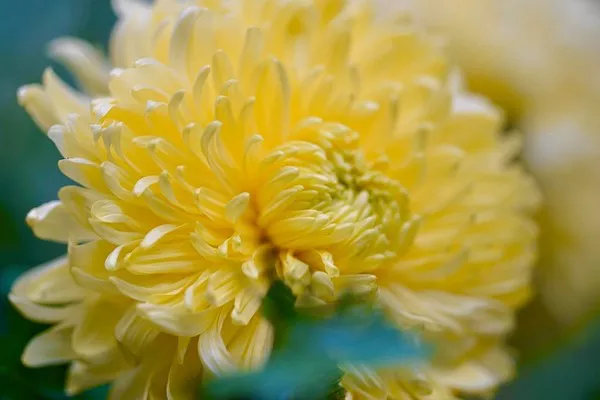Flowers have long held a special place in human culture, serving as symbols of love, beauty, and celebration. However, many people are unaware that some of the most beloved and beautiful blooms can pose a significant threat to their feline companions. Cats, known for their inquisitive nature, often explore their environment by sniffing, nibbling, or even chewing on plants. As responsible pet owners, it is crucial to be aware of which flowers can be harmful to cats to ensure their well-being. In this comprehensive guide, we will delve into some common flowers that can be toxic to cats, the potential dangers they pose, and how to keep your feline friends safe.
Understanding Floral Toxicity
Before diving into the specific flowers that can be harmful to cats, it’s essential to grasp the concept of floral toxicity. Toxicity refers to the degree to which a substance can harm or damage an organism when it is ingested, inhaled, or even touched. When it comes to cats and flowers, toxicity can manifest in various ways, including gastrointestinal upset, organ damage, neurological symptoms, or even death in severe cases.
Floral toxicity can vary greatly depending on the flower’s species and the parts consumed. Some plants may only cause mild irritation, while others can result in severe health issues. Factors like a cat’s age, overall health, and the amount of the toxic substance ingested can also influence the severity of symptoms.
Common Flowers Harmful to Cats
1. Lilies (Lilium spp. and Hemerocallis spp.)
Lilies are notorious for their extreme toxicity to cats, particularly species like Easter lilies, tiger lilies, and Asiatic lilies. Even a small nibble of these flowers can lead to kidney failure in cats. Early signs of lily toxicity include vomiting, drooling, and lethargy, progressing to severe kidney damage if not treated promptly. If you suspect your cat has ingested any part of a lily, seek immediate veterinary care.
2. Tulips (Tulipa spp.)
Tulips are a common springtime favorite, but their bulbs contain substances known as tulipalin A and B, which can cause gastrointestinal upset, excessive drooling, and, in severe cases, convulsions and cardiac issues in cats. The highest concentration of these toxins is found in the bulbs, so be cautious if you have these flowers in your garden or home.
3. Daffodils (Narcissus spp.)
Daffodils are known for their bright yellow blooms, but they contain toxic alkaloids, such as lycorine, which can cause severe vomiting, diarrhea, and even cardiac abnormalities if ingested by cats. Keep daffodils out of reach, especially the bulbs, which are more toxic than the flowers.
4. Azaleas (Rhododendron spp.)
Azaleas are popular ornamental shrubs, but they contain grayanotoxins that can lead to drooling, vomiting, diarrhea, and even life-threatening cardiac abnormalities in cats. Ingesting any part of the azalea plant can be harmful, so it’s best to avoid having them around your feline friends.
5. Oleander (Nerium oleander)
Oleander is an attractive flowering shrub often found in gardens and landscapes. All parts of the oleander plant are highly toxic, containing toxic compounds called cardiac glycosides. Symptoms of oleander poisoning in cats include vomiting, diarrhea, heart arrhythmias, and, in severe cases, death. Ensure your cat does not have access to this plant.
6. Sago Palm (Cycas revoluta)
While not a true flower, the sago palm is a popular houseplant known for its striking appearance. However, all parts of the sago palm, especially the seeds, contain a potent toxin called cycasin. Ingestion can result in severe liver failure and neurological symptoms, and it is often fatal if not treated promptly.
7. Chrysanthemums (Chrysanthemum spp.)
Chrysanthemums are a common choice for fall floral arrangements, but they contain pyrethrin, a natural insect repellent that can be harmful to cats. Ingesting chrysanthemums can lead to drooling, vomiting, diarrhea, and in some cases, tremors or seizures.
8. Autumn Crocus (Colchicum autumnale)
Autumn crocus, also known as meadow saffron, produces beautiful purple or pink flowers in the fall. However, it contains colchicine, a highly toxic substance that can lead to severe gastrointestinal distress, kidney and liver damage, and even death in cats.
Preventing Floral Toxicity in Cats
Now that we have identified some common flowers that are harmful to cats, let’s discuss essential preventive measures to keep your feline companions safe:
Educate Yourself: Knowledge is your first line of defense. Familiarize yourself with toxic flowers and plants, and remove them from your home and garden if you have cats.
Secure Your Garden: If you have outdoor cats, consider creating a cat-friendly garden with non-toxic plants and barriers to prevent access to toxic ones.
Monitor Indoor Plants: Ensure indoor plants are placed out of your cat’s reach. Hanging plants and shelves can help keep curious kitties away from dangerous blooms.
Supervision: When you bring home a bouquet or floral arrangement, keep it in a place where your cat can’t access it, or closely monitor your pet while it’s nearby.
Consult Your Vet: If you suspect your cat has ingested a toxic flower, seek immediate veterinary attention. The earlier treatment begins, the better the chances of a full recovery.
Conclusion
While flowers can add beauty and fragrance to our lives, it’s essential for cat owners to be aware of the potential dangers certain blooms can pose to their feline companions. Lilies, tulips, daffodils, azaleas, oleander, sago palms, chrysanthemums, and autumn crocuses are just a few examples of flowers that can be harmful to cats. By educating ourselves, taking preventive measures, and promptly seeking veterinary care if needed, we can ensure that our beloved cats stay safe and healthy in a floral-filled world. Remember, a little knowledge and caution go a long way in protecting our four-legged friends.


